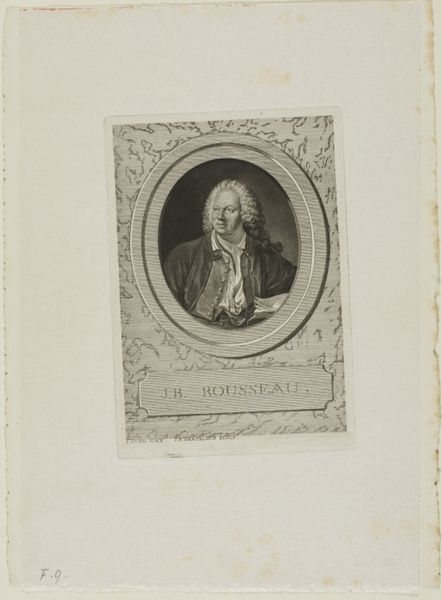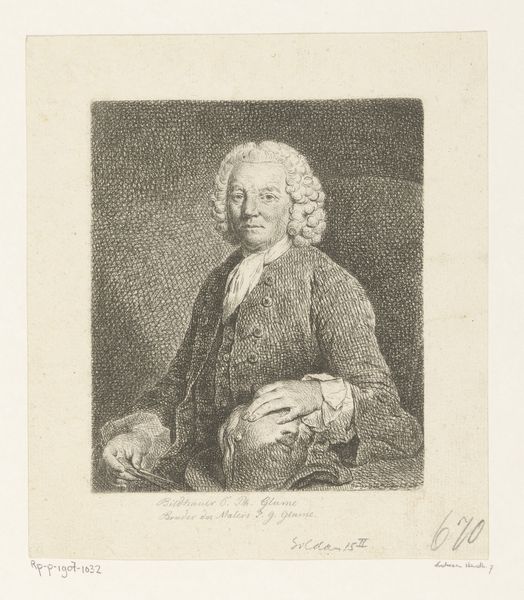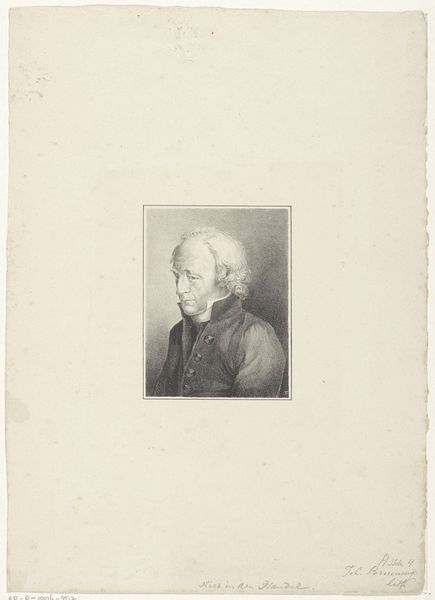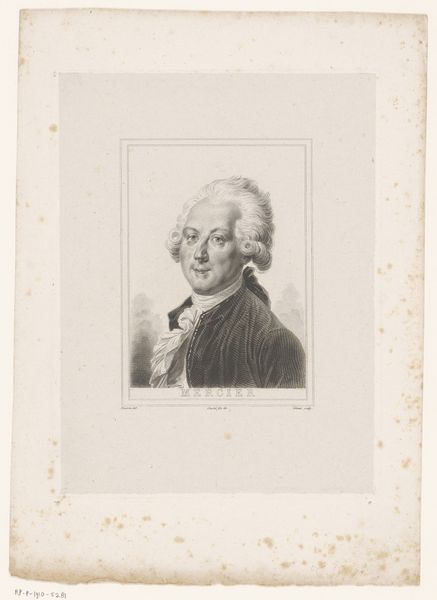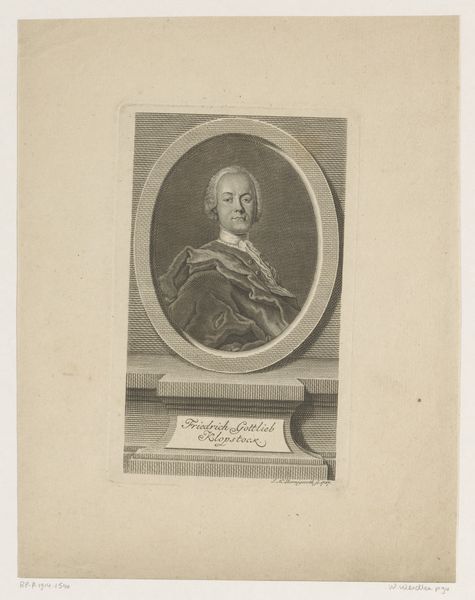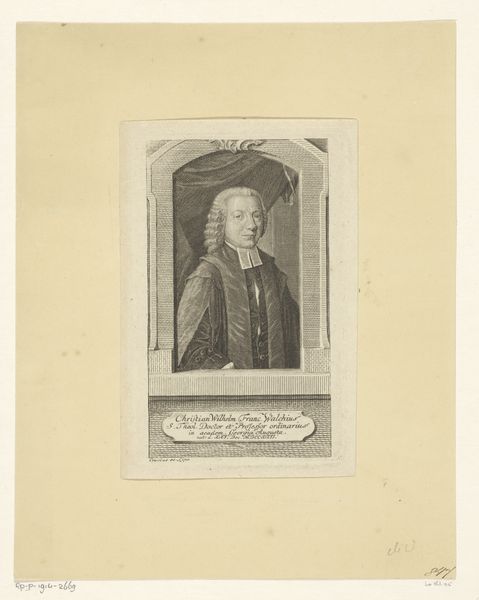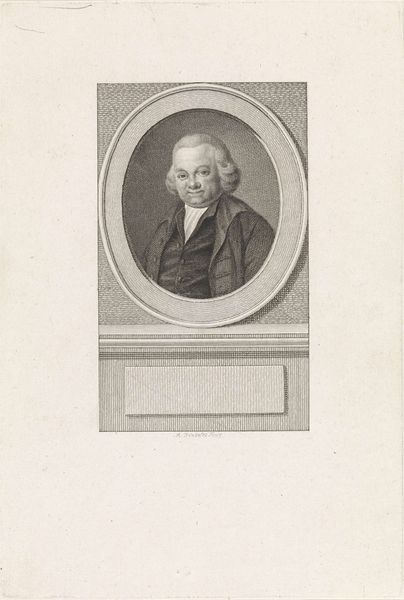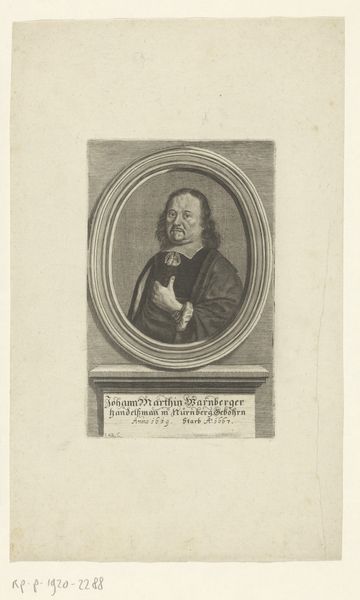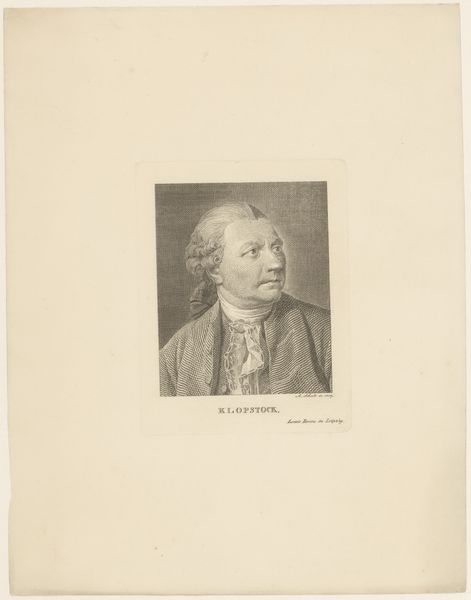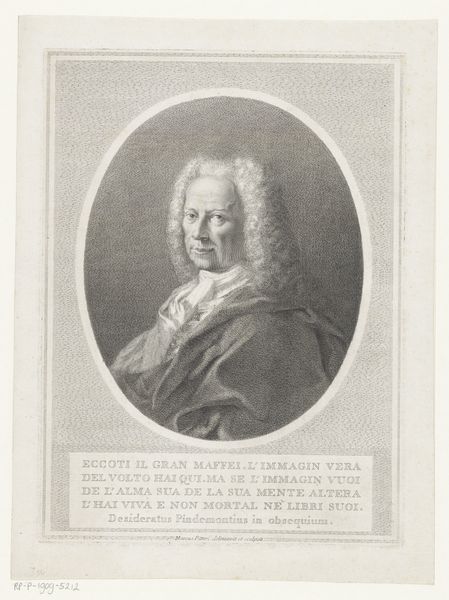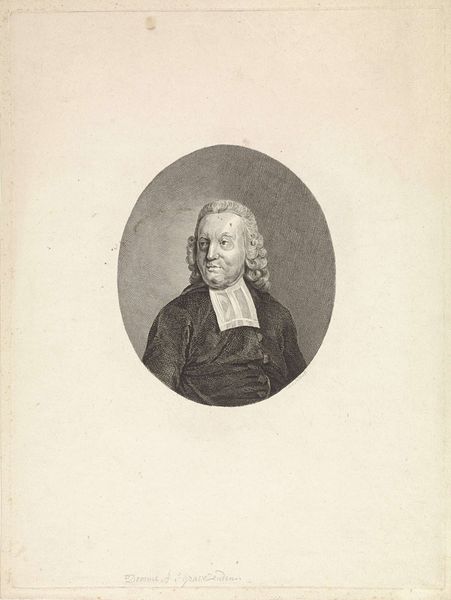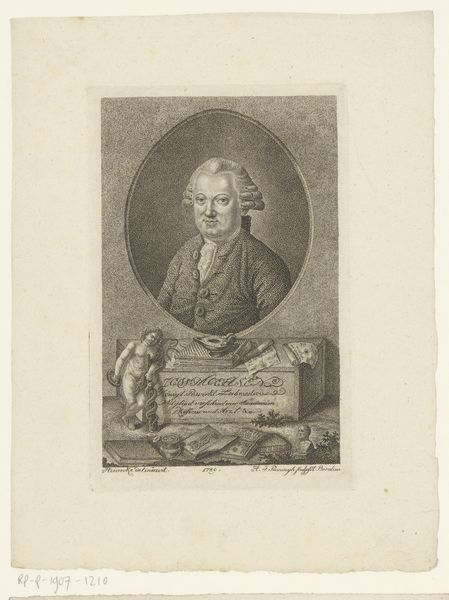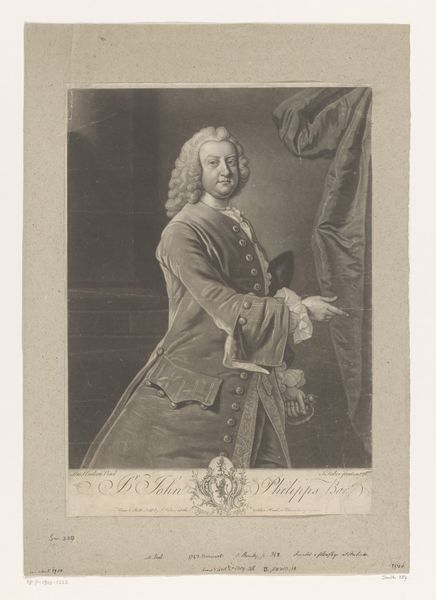
print, engraving
#
portrait
#
baroque
# print
#
old engraving style
#
history-painting
#
engraving
Dimensions: height 155 mm, width 132 mm
Copyright: Rijks Museum: Open Domain
Editor: This is a print titled "Portret van Johann Georg Glume, vader van de kunstenaar" made in 1748 by Johann Gottlieb Glume. It's an engraving, and it feels incredibly formal and precise. What strikes you most about its composition? Curator: The immediate point of entry for me is the masterful deployment of line. Observe the density and variation; the hatching used to articulate form, volume, and the fall of light across the figure’s face and clothing. Ask yourself: what effect does this emphasis on line, as opposed to tonal gradations, create? Editor: It does make the figure appear very defined and almost stoic. Is that intentional, perhaps linked to Baroque portraiture styles? Curator: Indeed. Baroque portraiture frequently used established visual vocabularies to communicate power and status. Consider how the linearity contributes to a sense of rigidity, of controlled presentation. Also, think about the surface texture; how does the medium of engraving—the physical act of incising lines into a metal plate—impact your reading of the portrait's subject? Editor: That’s a good point; engraving does feel more permanent than, say, charcoal. I guess that reinforces the subject’s importance, being captured so definitively. Curator: Precisely. Now consider the internal relationships within the work: the interplay between light and shadow, the angles of the cane. Are there any oppositions that become significant for you? Editor: The crisp details versus the almost hazy background is really interesting; one suggests importance, the other feels secondary. I hadn’t really thought about it like that. Curator: Close observation brings its own rewards. Formal elements aren't simply aesthetic choices; they actively shape meaning. Editor: I'll definitely be paying more attention to line from now on. Thanks!
Comments
No comments
Be the first to comment and join the conversation on the ultimate creative platform.
